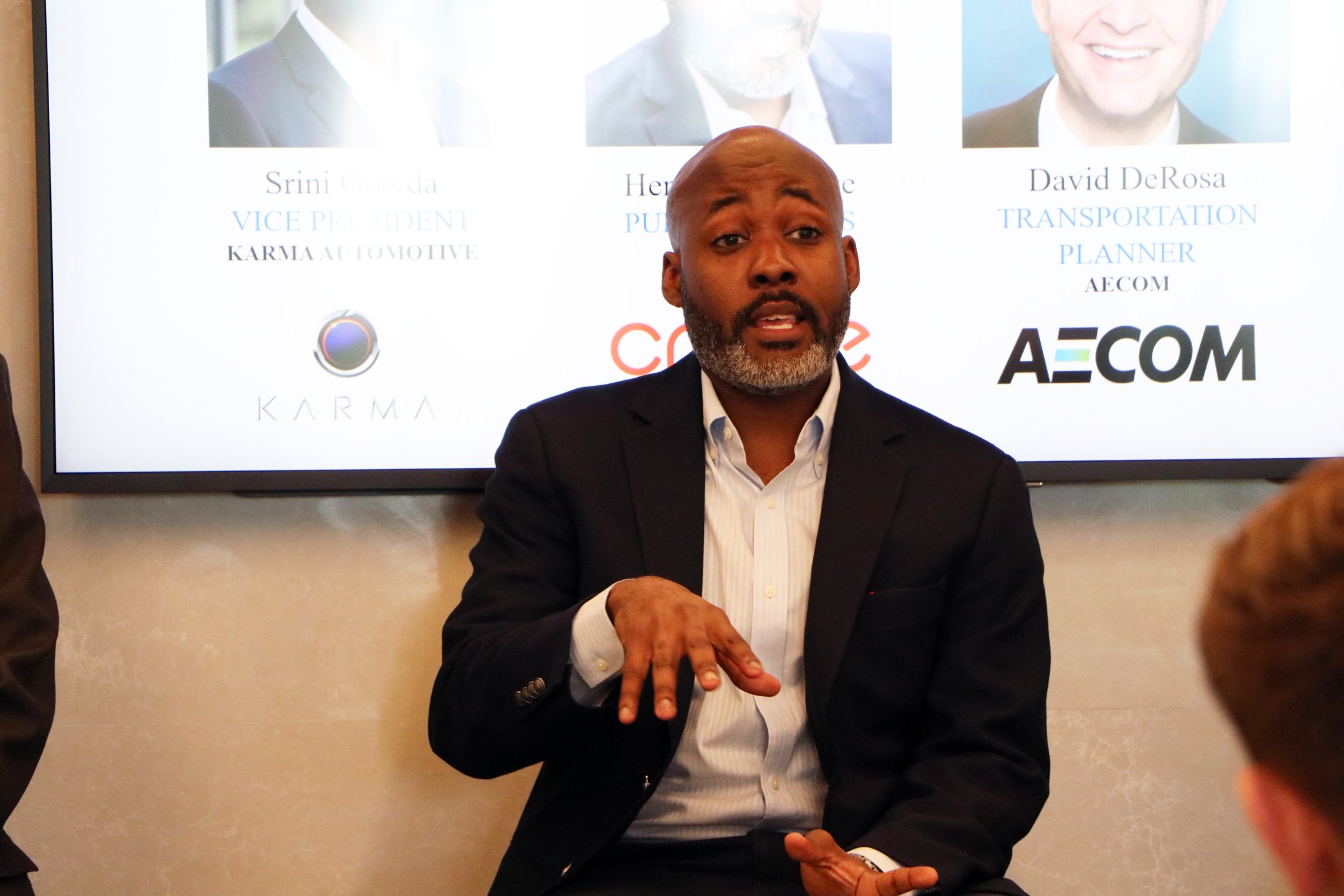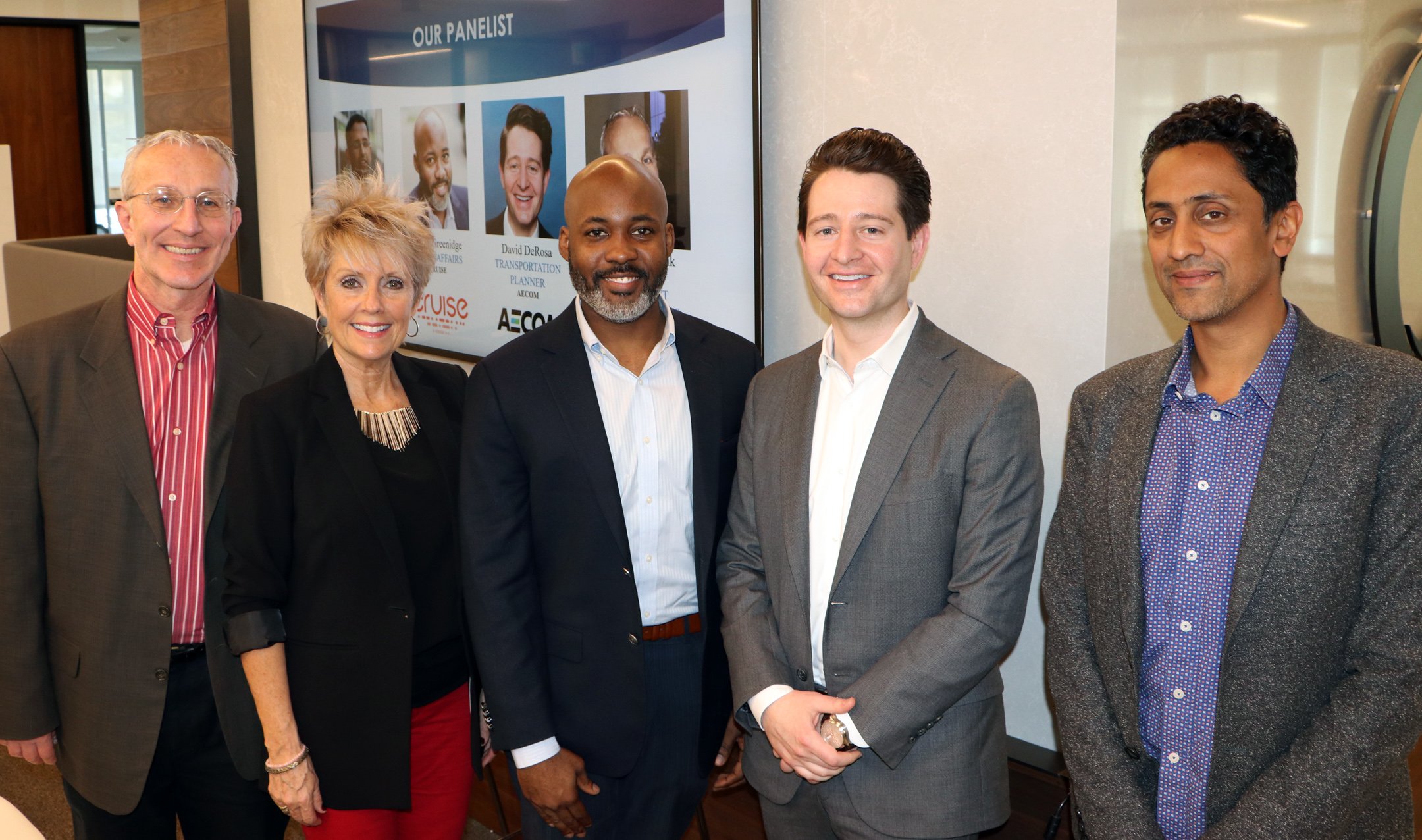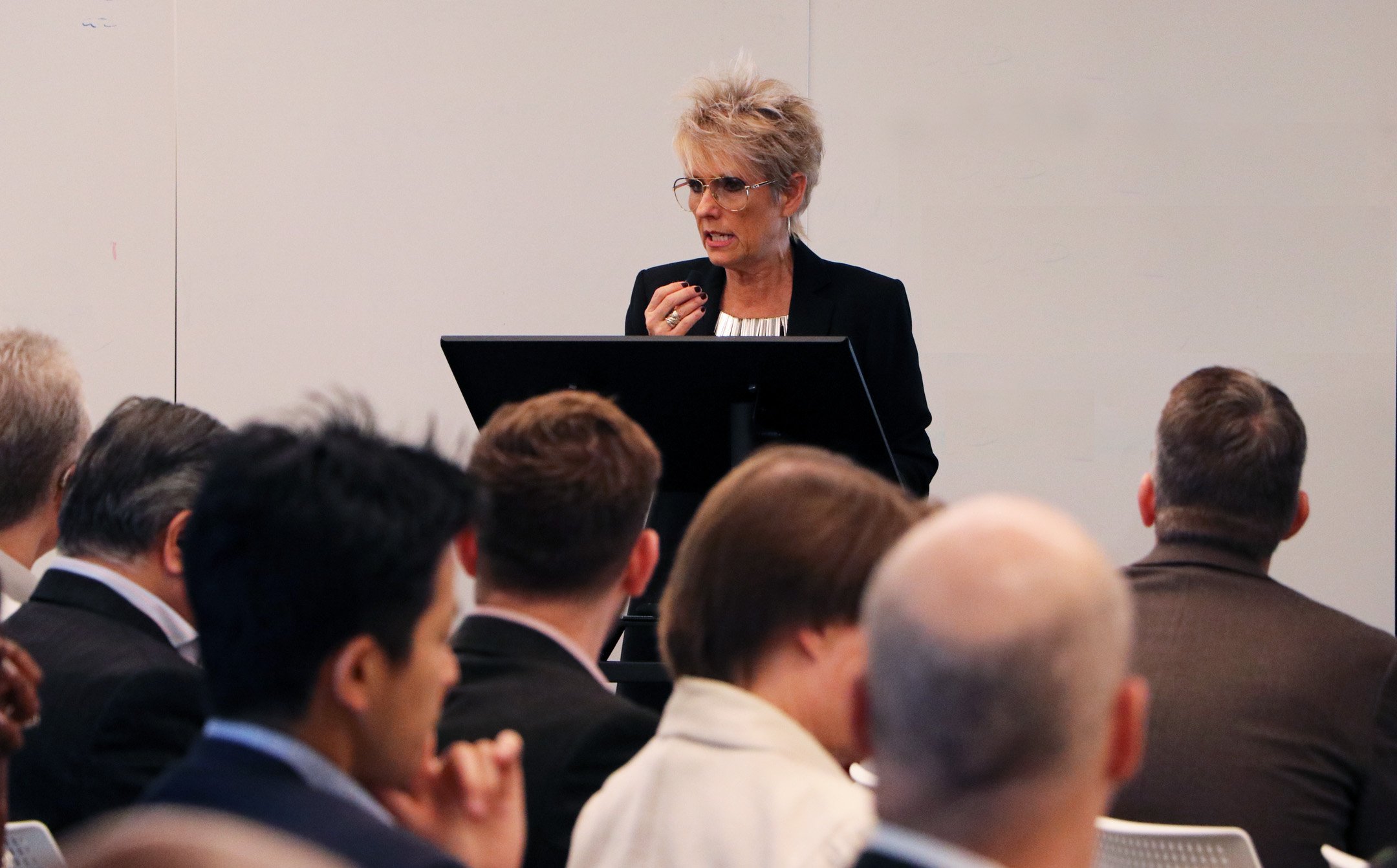5G and Mobility: Speeding up the Future:
Industry leaders, key stakeholders and local educators joined an insightful conversation around the next generation of wireless connectivity and transportation in Los Angeles, on February 13, at LAEDC’s e4 Mobility Alliance meeting.
Hosted by the Center for a Competitive Workforce (CCW), the meeting included a keynote with Henry Greenidge of Cruise Automation followed by a panel of industry experts addressing how the latest technologies will impact both the industry and community—and how the workforce is adapting.
These critical conversations with industry seed partnerships and academic responsiveness to the dynamic economy of the present and future. Richard Verches, CCW Executive Director set the stage, representing the 19 regional LA Basin community colleges with students in search of careers in this competitive and evolving landscape.
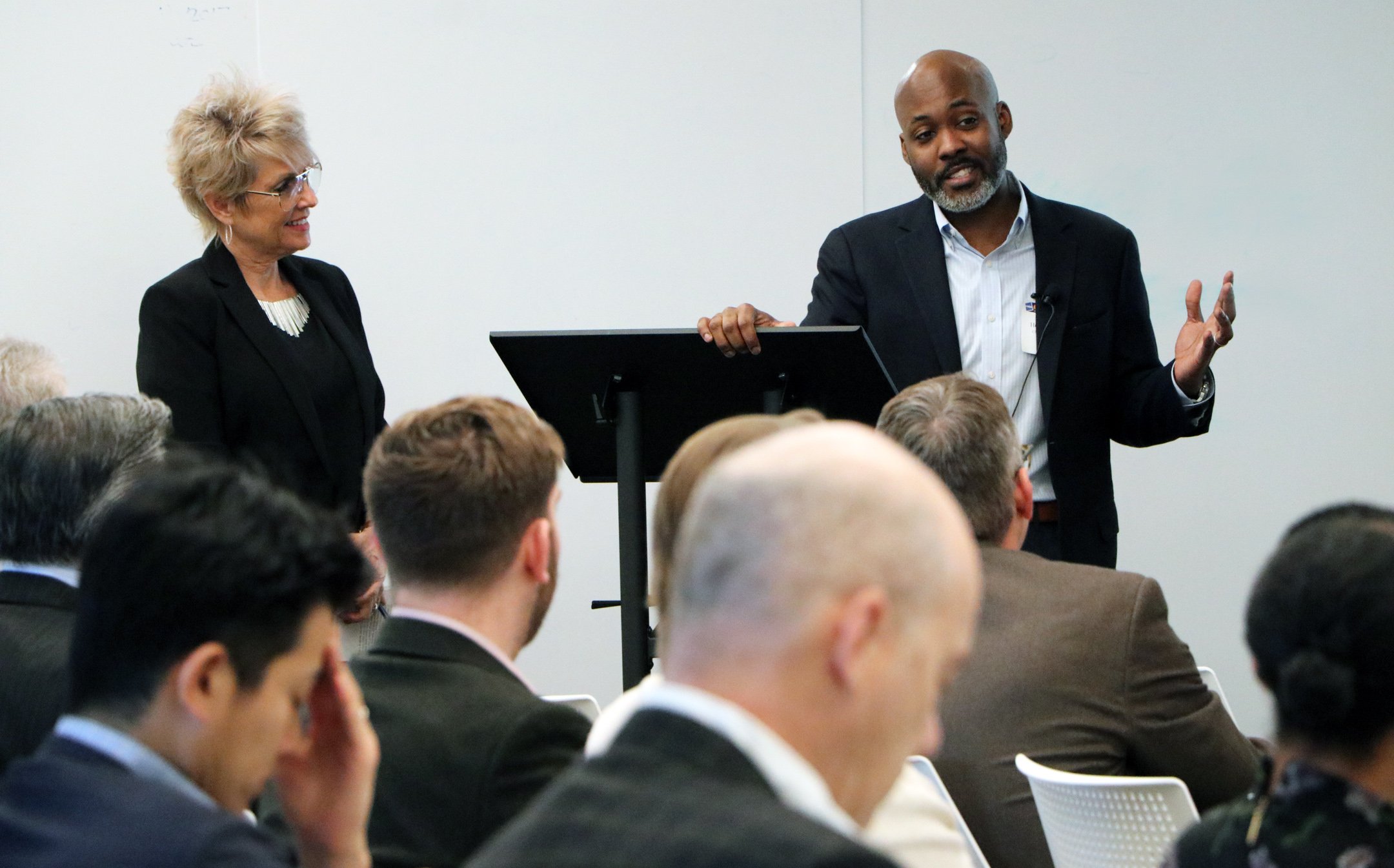
Keynote speaker Henry Greenidge, an attorney and policy advisor, currently leads Public Affairs for Cruise, a General Motors majority-owned company focused on developing self-driving technology to launch a driverless ride share service. With experience at the Federal Communications Commission, the U.S. Department of Transportation, and the White House Office of Management and Budget, he believes the core of this new technology will provide an incredibly significant social impact. Disruptive as autonomous vehicles will be in a well-established market, Cruise aims to improve lives through increasing safety, giving billions of hours back to people, serving the planet, and restoring movement to people left behind by the current transportation system.
A testament to Los Angeles’ ecosystem of innovation, in 2017, Cruise acquired Strobe, a Pasadena-based LiDAR company with instrumental sensing technologies. The foundational question posed by Verches to start the event: How do we nurture and grow Los Angeles’ unique ecosystem through partnerships, policy, workforce development and networking?
Following the keynote, Greenidge was joined by David DeRosa of AECOM and Chuck Dankocsik of Siemens on a panel moderated by e4 Mobility Alliance chair Shaun Arora of MiLA Capital. To begin, Arora inquired as to what 5G will mean to the County of Los Angeles.
These new technologies present opportunities, challenges and unknowns to take into consideration. Benefits include more responsive and dynamic connectivity, including improved performance of navigation apps, in addition to curbside management and the possibility of moving from static street signage and curb paint, to digital real-time communication. DeRosa notes however, that accessibility of smart phones must be considered as currently about 25% of the County’s population does not utilize app technology.
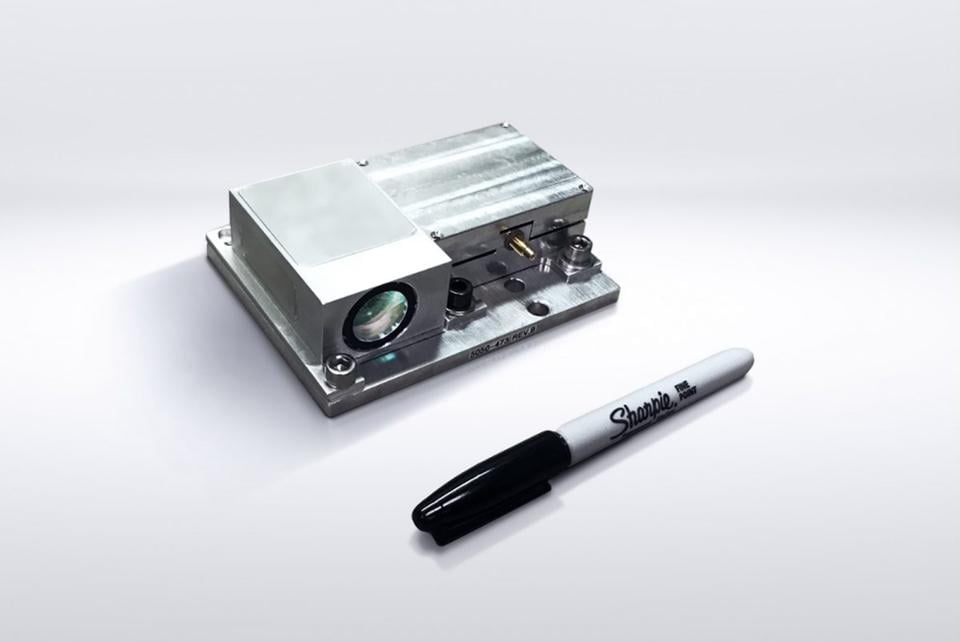
On the topic, Greenidge also highlighted the potential opportunities for governments to partner with private companies in researching, developing and taking advantage of these new technologies. An increase in access to data could be utilized to address a myriad of issues, but of course, many cities are grappling with how the data will be managed. Fortunately, LADOT is leading by example with an open data philosophy and works with nav apps developers, among other partners.
The panel’s consensus around workforce and job opportunities pointed to a considerable need for software and hardware engineers, as well as technicians to install and maintain transmitters that will integrate with the grid and existing environment. AECOM is currently assessing their workforce needs but indicated a need for civil engineers will remain, however software skills’ importance will continue to increase. They’ve also identified data science as a much-needed specialty including analysis and management of large infrastructure data sets.
Undoubtedly, diversity in the workforce fuels creativity and innovation. Jessica Ku Kim, Sr. Director of Workforce Development at LAEDC, started a robust dialogue around the need to cultivate a more diverse and inclusive talent pipeline in this field. All three companies recognized the imperative need for partnerships and collaboration to do so. Greenidge showcased Cruise’s considerable investment in this area with multiple strategic partnerships including with:
- Humanmade to teach high school students about manufacturing and engineering
- Code 2040 to provide internship opportunities for students of color
- Nextplay to recruit diverse talent
The consensus expressed was that it’s not a question of whether the talent is there—it’s a matter of finding it outside of traditional spheres and creating programs that cultivate it.
Thank you to all who attended and participated, including our exceptional panelists.
These discussions and partnerships are key to the mission of this alliance: to promote and further develop Southern California as the leader in advanced transportation and a range of e-mobility solutions. Through this work, job creation is fostered, creating economic opportunity in our local community.
LAEDC is releasing its upcoming report, Electric Mobility Revolution in Southern California report, on March 2nd. Check back for that exciting regional study.
For more information on how to get involved with LAEDC’s e4 Mobility Alliance, contact Ms. Jacqueline Johnson at [email protected]
—–
This post was authored by Claire Anderson, LAEDC
